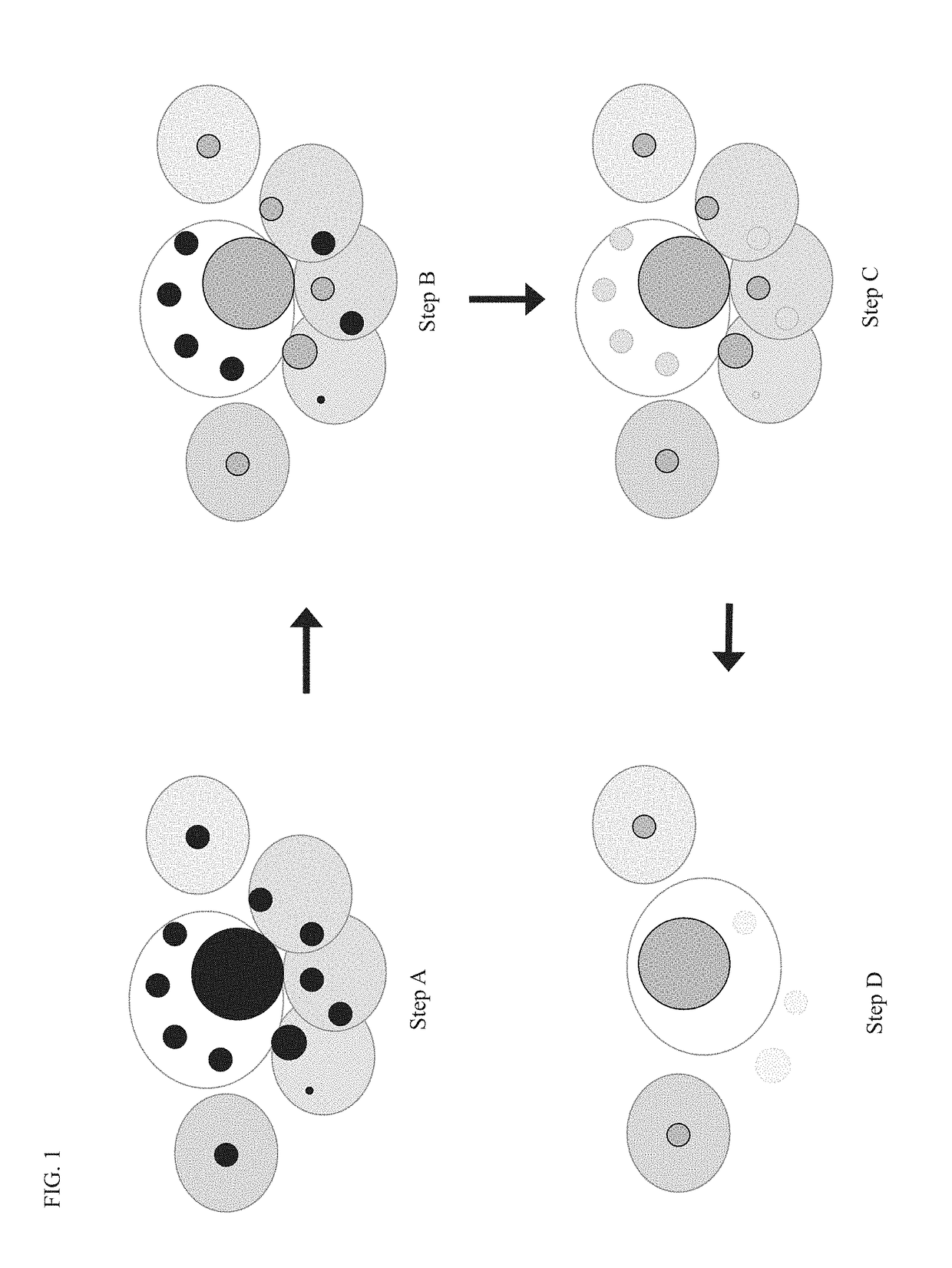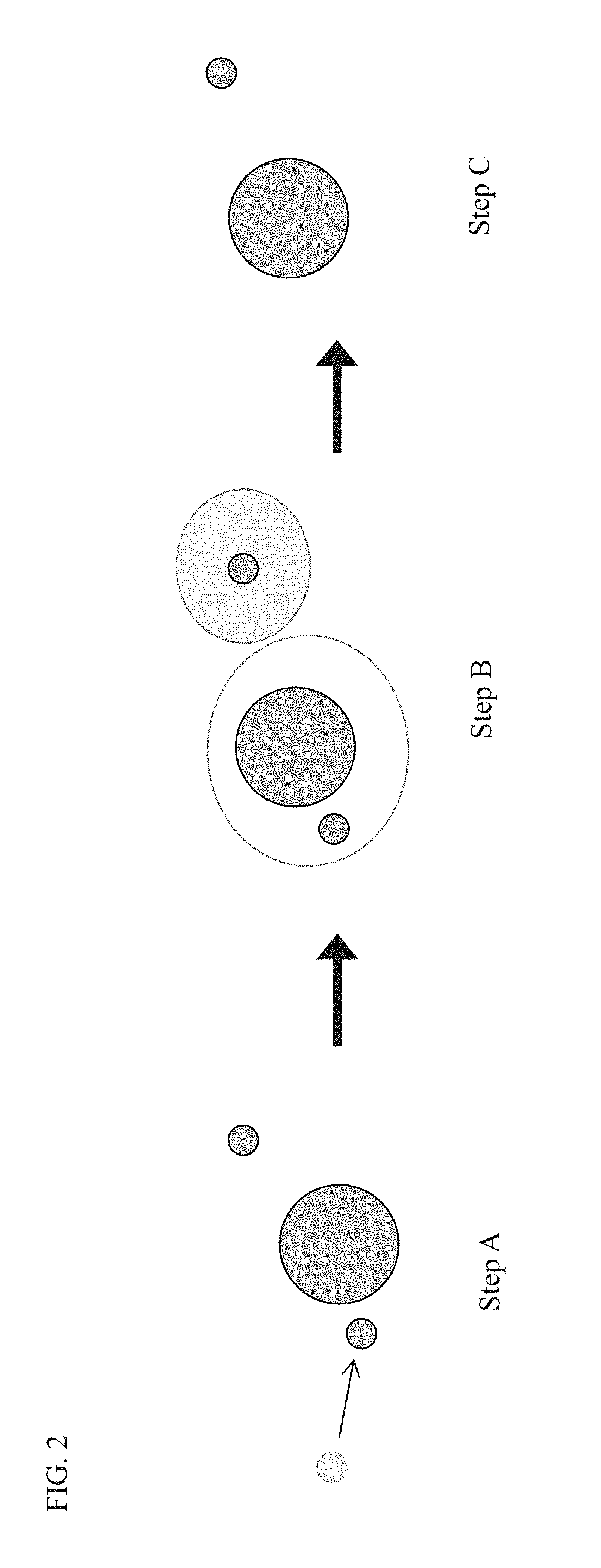Compositions and methods for immune repertoire sequencing
a repertoire and sequencing technology, applied in the field of compositions and methods for immune repertoire sequencing, can solve the problems of low throughput techniques such as sanger sequencing, unable to provide efficient means to broad capture the entire immune repertoire, and unable to achieve efficient and effective reflection of the true repertoire,
- Summary
- Abstract
- Description
- Claims
- Application Information
AI Technical Summary
Benefits of technology
Problems solved by technology
Method used
Image
Examples
example 1
[0309]Total RNA was extracted from samples with the RecoverAll™ Total Nucleic Acid Isolation Kit (Ambion, Inc.), according to manufacturer instructions, then quantified, e.g., using the Qubit™ RNA HS Assay Kit (Thermo Fisher) for quantifying RNA. A total of 100 ng of total RNA was first reverse transcribed to cDNA with SuperScript® VILO™ cDNA Synthesis Kit (Thermo Fisher) according to manufacturer instructions. Prepared cDNA was used in a multiplex polymerase chain reaction to amplify TCR beta V region sequences. Sets of forward and reverse primers selected from Table 2 were used as primer pairs in amplifying TCR beta sequences comprising sequence from the FR1 region to the C region.
[0310]In an exemplary reaction, the multiplex primer set included 49 different TCR Beta V gene (TRBV) forward primers SEQ ID NOs: 105, 108-153, 163, and 177, and 2 different TCR Beta C gene (TRBC) reverse primers SEQ ID NOs:181 and 182. In other reactions, the multiplex primer set of 49 different TRBV fo...
example 2
[0327]T cell repertoires found in circulating leukocytes and in TILs in an individual with squamous cell carcinoma were characterized and compared. Total RNA was extracted from peripheral blood leukocytes (PBL) and from a tumor biopsy obtained from an individual with stage 1B squamous cell carcinoma of the lung. For each sample, cDNA was prepared from 100 ng of total RNA, the cDNA was amplified in a multiplex reaction using the primer set having 64 different TRBV forward primers and 2 different TRBC reverse primers (SEQ ID NOs: 90-153 and 181-182) with each primer at 200 nM, and sequencing was performed as described in Example 1. The generated sequence data was subjected to the error identification and removal programs provided herein.
[0328]Tumor biopsy sequencing revealed 589 unique T cell receptors and an oligoclonal repertoire with a small number of dominating clones (Shannon diversity index: 6.78). PBL sequencing revealed 45,305 unique T cell receptors and a diverse, polyclonal ...
example 3
[0330]The following demonstrates an alternative approach for amplification of an immune receptor repertoire which combines the use of a fusion primer for the constant region with a set of primers for the variable region.
[0331]A primer set containing 49 different TRBV forward primers SEQ ID NOs: 108-153, 162, 172, and 179 (see Table 2) was used with 2 different TRBC reverse fusion primers to amplify TCR beta V regions in an RNA sample. One of the TRBC reverse fusion primers contained the TRBC_R3 (SEQ ID NO: 183) primer sequence and the other contained the TRBC_R4 (SEQ ID NO: 184) primer sequence from Table 2. Each fusion primer also contained a barcode sequence and an A-key tagging sequence on the 5′ end. RNA was extracted and cDNA prepared as described in Example 1. To a single well of a 96-well PCR plate was added 10 microliters prepared cDNA, 1 microliter of 1 μM TRBV forward primer pool (containing the 49 primers), 1 microliter of 1 μM TRBC reverse primer pool (containing the 2 f...
PUM
| Property | Measurement | Unit |
|---|---|---|
| Tm | aaaaa | aaaaa |
| temperature | aaaaa | aaaaa |
| pH | aaaaa | aaaaa |
Abstract
Description
Claims
Application Information
 Login to View More
Login to View More - R&D
- Intellectual Property
- Life Sciences
- Materials
- Tech Scout
- Unparalleled Data Quality
- Higher Quality Content
- 60% Fewer Hallucinations
Browse by: Latest US Patents, China's latest patents, Technical Efficacy Thesaurus, Application Domain, Technology Topic, Popular Technical Reports.
© 2025 PatSnap. All rights reserved.Legal|Privacy policy|Modern Slavery Act Transparency Statement|Sitemap|About US| Contact US: help@patsnap.com



